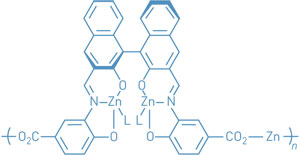Advertisement
Grab your lab coat. Let's get started
Welcome!
Welcome!
Create an account below to get 6 C&EN articles per month, receive newsletters and more - all free.
It seems this is your first time logging in online. Please enter the following information to continue.
As an ACS member you automatically get access to this site. All we need is few more details to create your reading experience.
Not you? Sign in with a different account.
Not you? Sign in with a different account.
ERROR 1
ERROR 1
ERROR 2
ERROR 2
ERROR 2
ERROR 2
ERROR 2
Password and Confirm password must match.
If you have an ACS member number, please enter it here so we can link this account to your membership. (optional)
ERROR 2
ACS values your privacy. By submitting your information, you are gaining access to C&EN and subscribing to our weekly newsletter. We use the information you provide to make your reading experience better, and we will never sell your data to third party members.
Materials
Tailorable Nanoparticles Synthesized
December 5, 2005
| A version of this story appeared in
Volume 83, Issue 49

Coordination polymers formed from transition-metal ions and carboxylate-functionalized building blocks are well-known and typically prepared as macroscopic crystalline materials. Chemists at Northwestern University have now found a way of synthesizing the polymers as spherical micro- and nanoparticles (Nature 2005, 438, 651). Moonhyun Oh and Chad A. Mirkin show that addition of an initiation solvent to a precursor solution of metal ions and chiral carboxylate-functionalized binaphthyl bis-metallotridentate Schiff base building blocks results in the spontaneous and fully reversible formation of a new class of nanoparticles consisting of polymerized networks of metal ions and metalloligands such as the network shown (L = ancillary solvent ligand). The nanoparticles aggregate and fuse into uniform, smooth, spherical microparticles that are stable in organic solvents, in water, and in the dried state. The approach opens up the possibility of tuning the chemical and physical properties of the colloidal particles by changing their metal and organic components. “Targeted applications include catalysis, biological labels, encoding materials, and dyes,” Mirkin suggests.
.


Join the conversation
Contact the reporter
Submit a Letter to the Editor for publication
Engage with us on Twitter